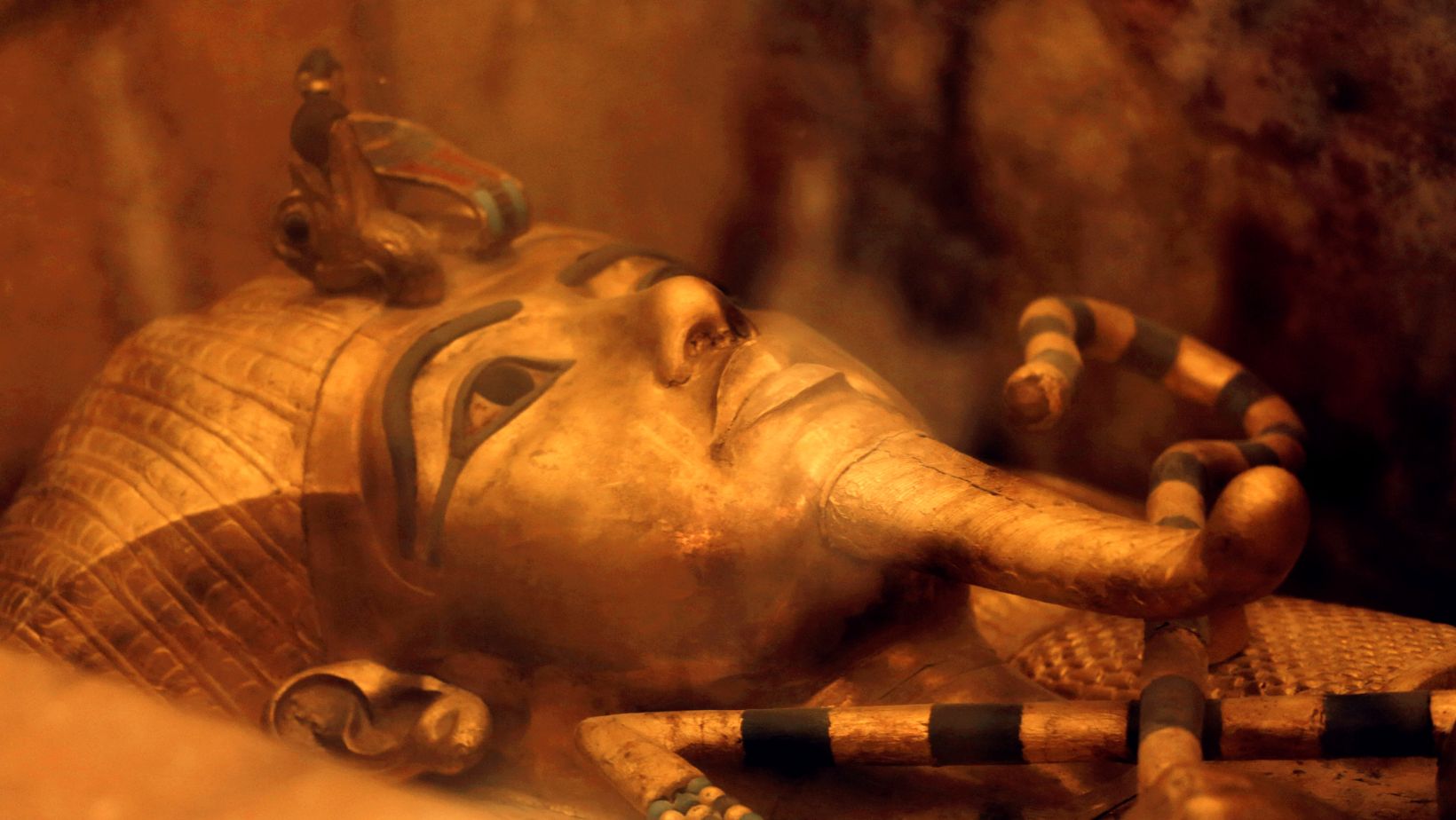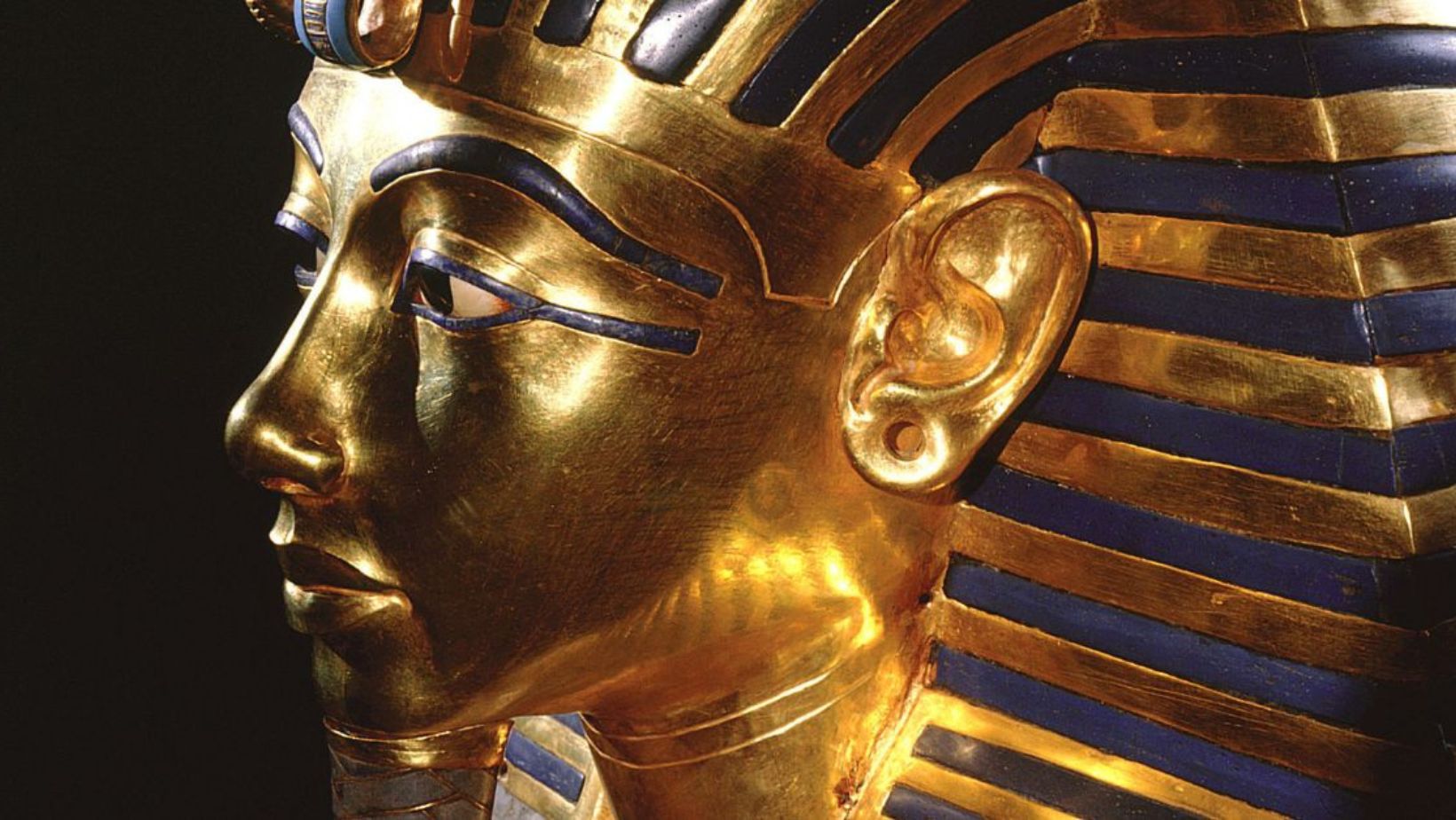The discovery of Tutankhamun tomb in 1922 sent shockwaves through the world. But soon, whispers of a deadly curse began to spread. Several people connected to the excavation mysteriously died under strange circumstances, fueling rumors that the tomb was cursed. Was it simply coincidence, or was there a darker force at play? The so-called “Curse of the Pharaohs” has intrigued historians and adventurers alike. In this blog, we’ll dive into the details of Tutankhamun’s tomb, explore the deaths tied to the discovery, and question whether the curse is myth, mystery, or something more. Let’s unravel the legend together.
The Discovery of the Tomb of Tutankhamun: A Fateful Beginning

In 1922, British archaeologist Howard Carter made one of the most significant discoveries in Egyptology: the tomb of Tutankhamun. After years of searching, he found the sealed entrance in the Valley of the Kings. Carter’s determination paid off when he discovered the tomb’s doorway, untouched for over 3,000 years. The site, covered in debris and sand, had remained hidden from tomb robbers and explorers.
Once the tomb was opened, Carter and his team uncovered a treasure trove of artifacts. The most famous was the golden burial mask of the young pharaoh. The discovery captivated the world, bringing Egyptology into the spotlight. However, the aftermath of the discovery quickly turned mysterious.
Shortly after the tomb was uncovered, a series of deaths among those involved sparked rumors of a “curse of the pharaohs.” Lord Carnarvon, the financier of the excavation, died shortly after entering the tomb. This fueled public fascination with the supposed curse, despite no evidence linking it to the tomb itself. Nonetheless, the discovery of Tutankhamun’s tomb remains a pivotal moment in archaeological history.
The Deaths That Sparked the Curse Legend: Tutankhamun
The deaths that occurred shortly after the opening of King Tutankhamun’s tomb in 1922 are central to the infamous curse legend. Lord Carnarvon, who financed the excavation, died suddenly from an infected mosquito bite just months after entering the tomb. His death, followed by others closely connected to the tomb, including members of the expedition team, sparked widespread fear. These events fueled the belief that a curse had been unleashed upon those who disturbed the pharaoh’s resting place.
The rapid succession of deaths, often under mysterious or unusual circumstances, added to the mystery. Newspapers of the time sensationalized these deaths, linking them to ancient Egyptian curses. The public’s fascination with the idea grew, as many believed that the curse was a divine retribution for disturbing the dead. While modern scholars dismiss the curse as a myth, these tragic events continue to captivate imaginations, leaving a lasting legacy in the story of King Tut’s tomb.
Who Was Tutankhamun?
Tutankhamun was an Egyptian pharaoh who ruled from around 1332 to 1323 BCE during the 18th Dynasty. He ascended to the throne at a young age, likely around nine, after the death of his father, Akhenaten. King Tut’s reign was short, lasting only ten years, and he died at around eighteen years old. Despite his youth, his reign is significant because he restored many of Egypt’s traditional religious practices after his father’s radical changes.
Tutankhamun is best known for the discovery of his nearly intact tomb in 1922 by archaeologist Howard Carter. His tomb, located in the Valley of the Kings, is one of the most significant archaeological finds in history. The tomb contained a wealth of treasures, including a golden mask, chariots, jewelry, and statues. These treasures have provided invaluable insights into ancient Egyptian art, culture, and burial practices.
The Origins of the Curse Myth: Tutankhamun
The curse myth has deep roots in ancient history, often linked to divine wrath or the anger of supernatural forces. It was believed that certain individuals or objects could bring misfortune or death due to a powerful curse placed upon them. In many cultures, curses were tied to revenge, betrayal, or breaking sacred taboos. The idea of a curse was a way to explain inexplicable tragedies or misfortunes.
As popular culture evolved, the curse myth became a staple in literature and media. Writers, filmmakers, and artists began to use the curse as a plot device, often involving ancient relics or vengeful spirits. The myth gained widespread attention in stories about haunted objects, like the famous “King Tut’s Curse,” linked to the deaths of those who discovered the Egyptian pharaoh’s tomb. The allure of these myths grew as they blended mystery, danger, and the unknown.
Early reports of curses often cited unexplained deaths or disasters following the breaking of sacred rules. These tales were often amplified by newspapers and word of mouth, creating a sense of eerie inevitability. People began to associate real-life tragedies with supernatural forces, fueling the curse myth further. The combination of fear, mystery, and cultural fascination made the curse a lasting element in storytelling.
Coincidence or Cause? The Evidence for the Curse: Tutankhamun
The so-called “Curse of the Pharaohs” has long been associated with the discovery of King Tutankhamun’s tomb. Several individuals involved in the excavation, including Lord Carnarvon, the financier, mysteriously died shortly after the tomb was opened. This sparked rumors of a deadly curse linked to disturbing the resting place of the ancient king. Lord Carnarvon died from an infected mosquito bite, and several others, like archaeologist George Gould, also passed away prematurely.
Statistical analysis of these deaths, however, suggests that they may not be as mysterious as they seem. Many of those who died were elderly or in poor health, which makes their deaths less suspicious. The timing of their deaths, although dramatic, may simply be coincidental, as death rates in that era were high due to disease and poor medical knowledge.
Moreover, there were many people involved in the tomb’s discovery who lived long, healthy lives, further complicating the idea of a curse. In fact, statistical studies show no significant pattern of deaths that would definitively point to a supernatural cause. While the deaths are intriguing, they appear more likely to be the result of natural causes than any ancient curse.
Debunking the Curse: Rational Explanations about Tutankhamun

The idea of a curse surrounding historical deaths often leads to speculation and superstition. However, modern science provides rational explanations for many of these occurrences. Medical research shows that infections, accidents, and other health issues could easily explain sudden deaths attributed to a curse. In the past, diseases like tuberculosis, pneumonia, and infections went undiagnosed, often leading to mysterious deaths.
Accidents were also common, especially in earlier times when medical care was limited. Without modern technology, simple injuries could result in fatal outcomes, further fueling the belief in curses. As for the curse itself, experts argue that it’s a psychological phenomenon. The human mind often seeks patterns, especially in tragic or untimely events.
Modern science dismisses the idea of supernatural curses, explaining that many historical deaths can be attributed to natural causes. Advances in medicine and forensic science help researchers understand the real reasons behind these fatalities. While myths and legends persist, they are no match for the logical explanations offered by contemporary science.
The Role of the Media in Amplifying the Curse Legend: Tutankhamun
The media plays a significant role in shaping and amplifying myths, and the curse legend is no exception. Sensational reporting often magnifies the impact of such stories, creating intrigue and fear. Headlines that highlight mysterious deaths or unexplained events linked to a curse attract attention and draw in readers. This kind of reporting fuels the belief that there is truth to the legend, even when there is little evidence to support it.
News outlets and documentaries often focus on dramatic accounts, creating an atmosphere of mystery around the curse. The media’s tendency to revisit the legend during anniversaries or related events keeps the story alive in the public consciousness. This constant repetition in various formats, from newspapers to TV shows, ensures the legend’s longevity. Over time, the curse becomes more entrenched in popular culture, with each new report adding layers to the myth.
The media also benefits from the public’s fascination with the curse, increasing viewership and readership. Sensational stories generate buzz, ensuring that the legend remains a topic of conversation. In doing so, the media contributes to the myth’s growth, making it more pervasive and deeply rooted in society. The media, by amplifying these stories, plays a crucial role in turning a simple tale into a widespread legend.
Ancient Egyptian Beliefs and the Curse of the Pharaohs: Tutankhamun
Ancient Egyptians had a deep belief in the afterlife, where the soul would journey to the underworld. They believed that the actions of the living could influence the fate of the dead. In this context, tombs and burial sites were carefully protected to ensure the pharaoh’s safe passage into the afterlife. This protection was often accompanied by warnings and curses to deter tomb robbers.
The so-called “Curse of the Pharaohs” is a modern term for the belief that disturbing a tomb would bring misfortune or death. While there are no records of curses explicitly written in ancient Egyptian texts, tombs often had inscriptions threatening harm to intruders. These warnings were meant to protect the dead and deter desecration, which was considered a serious offense.
The idea of a curse became famous after the discovery of Tutankhamun’s tomb in 1922. Several individuals involved in the excavation died under mysterious circumstances, fueling the myth. However, many scholars believe these deaths were coincidental or due to natural causes. Ancient Egyptians valued the protection of their pharaohs, but the concept of a curse as we understand it today is likely a product of modern imagination.
The Curse in Popular Culture: Tutankhamun

The curse of Tutankhamun has been a staple in popular culture, often linked to mysterious deaths and misfortune. This legend began after the death of Lord Carnarvon, who financed the tomb’s discovery, shortly after its opening in 1922. In books, movies, and television, the curse is depicted as a deadly force that strikes those who disturb the pharaoh’s tomb. Authors and filmmakers have embraced the story, with some suggesting it’s a supernatural punishment for greed and disrespect.
One of the most famous portrayals of the curse can be found in films like The Mummy (1999), where an ancient curse is awakened, leading to terrifying consequences. Books, such as The Curse of the Pharaohs by Elizabeth Peters, delve into the mystery and intrigue surrounding Tut’s tomb, blending historical facts with supernatural elements. Television shows like Ancient Aliens also discuss the curse, speculating on alien involvement or otherworldly forces at play.
The curse has shaped how modern audiences perceive ancient Egypt, often intertwining history with myth. It’s fueled curiosity about Egyptology, even though most modern scholars dismiss the curse as a myth or coincidence. Nevertheless, the curse’s portrayal in pop culture continues to influence the fascination with Egypt’s mysterious past.
Conclusion: Tutankhamun
In conclusion, the mystery of the curse remains an intriguing blend of legend and reality. While some may view it as a mere myth or coincidence, the series of misfortunes tied to the curse cannot be easily dismissed. Whether it’s a psychological phenomenon, a series of unfortunate events, or something more supernatural, the curse continues to captivate and provoke thought. Ultimately, the truth may lie somewhere between myth and reality, leaving us with more questions than answers. Regardless, the curse’s story adds a layer of mystique to the events, enriching the historical narrative with intrigue and speculation.
FAQs
What is the “Curse of Tutankhamun”?
The Curse of Tutankhamun refers to a series of misfortunes and deaths surrounding those who were involved in the discovery of King Tut’s tomb in 1922. It gained widespread attention after several members of the expedition, including Lord Carnarvon, died under mysterious or unusual circumstances.
How did Lord Carnarvon’s death spark the curse rumors?
Lord Carnarvon, the British aristocrat who financed the excavation of Tutankhamun’s tomb, died shortly after its opening. He was reportedly bitten by a mosquito, leading to an infected wound that became fatal. His death shortly after the tomb’s discovery fueled rumors of a curse, especially since it was followed by other deaths among those associated with the tomb.
Are there any scientific explanations for the deaths linked to the tomb?
Some researchers believe that the so-called curse can be explained by factors such as natural causes, infections, or the spread of diseases like malaria or gangrene. Others point to the high stress and media pressure surrounding the discovery, which may have contributed to the premature deaths of some individuals.
Did any other members of the expedition suffer mysterious deaths?
Yes, several individuals connected to the tomb’s discovery, including archaeologist George Gould and the tomb’s chief restorer, Arthur Weigall, died unexpectedly. However, not all deaths were as dramatic or mysterious as Lord Carnarvon’s, and many researchers argue that coincidence played a significant role in these incidents.
Is the curse still believed to be true today?
While the curse remains a popular element of Egyptology lore, most modern archaeologists and historians dismiss it as superstition. Advances in medical science, as well as the long passage of time, have led to more rational explanations for the deaths, and the curse is often seen as a product of sensationalism and the public’s fascination with ancient Egypt.

